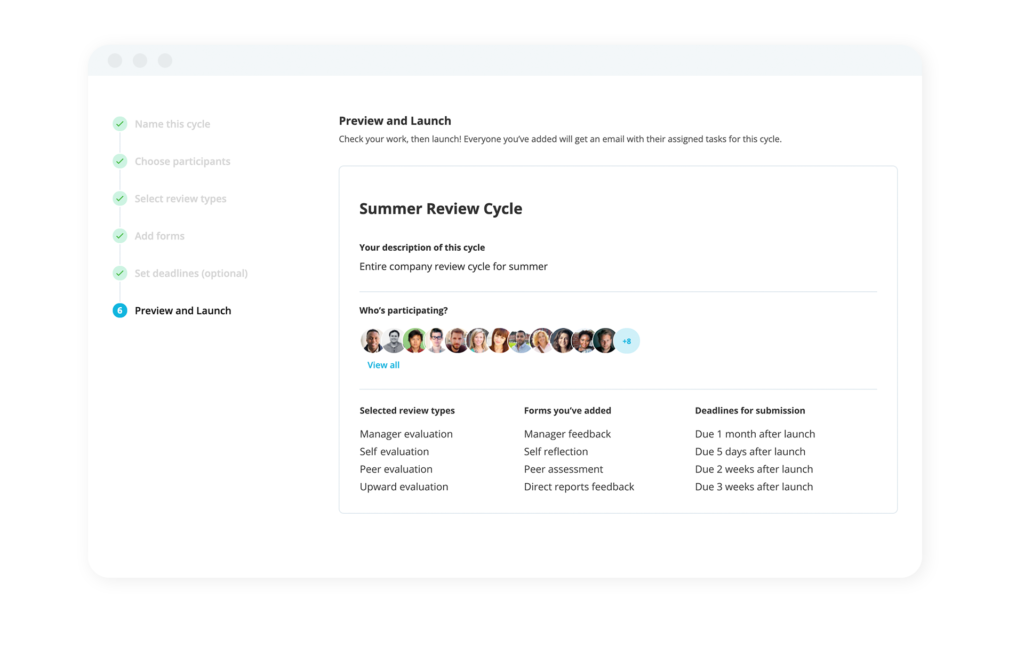What is a skills gap analysis & how to effectively conduct one

A skills gap analysis is a crucial exercise for every company as they strive to reach business objectives, maintain a skilled workforce and hire the best-fit candidates.
Here’s our comprehensive guide to conducting a skills gap analysis and using the insights to take action.
What is a skills gap analysis?
A skills gap analysis is a process in which employers identify missing organisational skills and develop a plan to fill them. A skills gap, more specifically, is a gap between the skills your employees have and the skills they collectively need to succeed.
Typically, a skills gap analysis has five unique steps:
Plan
Identify critical skills
Measure actual skills
Analyse data
Take action
Why is a skills gap analysis useful?
There are countless reasons why a skills gap analysis can be useful in furthering company goals through the learning and development process. Here are just a few:
It gives you full workforce visibility – Identify where gaps are (and where extra resources might be needed) at every level, from full departments and teams down to individual employees
It enables long-term workforce planning – Major skills gaps may indicate, via a skills matrix, a need to alter hiring practices or goals going forward as your team engages in workforce planning
It boosts learning & development for individuals – The analysis can uncover new L&D goals for individual contributors, show them additional skills they need for their current job and spotlight skills they might need for a future promotion
It increases productivity – One of the most crucial parts of the skills gap analysis is taking action, meaning that you’ll hopefully address the skills gaps that exist and improve productivity across your workforce
It creates a competitive advantage – Knowing the strengths and weaknesses of your workforce allows you to address the weaknesses and stay ahead of the competition
Conducting a skills gap analysis
When you’re ready to conduct a skills gap analysis, you’ll need to follow these five steps:
Step 1: Plan
The first step in a skills gap analysis is to plan and scope the project you are about to undertake. An analysis can take place on two different levels and you can choose to do one or both within the same initiative:
Individual – Involves identifying the skills needed for a specific job and comparing them to the skills the employee currently has
Team/department/company – Involves taking a more high-level view of the skills needed to work on a project or run the team/department/company successfully.
During this step, you should decide which stakeholders you’ll talk to, from C-suite to line managers to general members of staff.
If you’re doing the analysis at an individual level, consider which people will be able to best identify the skills gaps of individual employees (potentially their team leads or managers).
Step 2: Identify critical skills
Next, it’s time to identify the skills and knowledge that are needed for the business to meet its objectives. As you do this, consider not only skills that are currently needed for ongoing operations but skills that might be needed to meet future goals.
Think about questions such as:
What skills are most valued by our company?
What skills do we need to remain competitive in the future?
What skills do our employees need to do their jobs effectively and efficiently?
What skills are currently on the rise in our industry?
Which of our positions could end up being automated?
Are there new technologies our employees need to be skilled in?
Are there any job roles that don’t exist yet but we may need soon?
Job descriptions, business goals, company values, industry trends and regulatory changes are all great sources of information for this step. You should also ask the various stakeholders which skills are most important for their own roles, teams and departments.
Step 3: Measure actual skills
This is where you take a baseline reading of the skill sets your employees currently have. There are a variety of tools for this:
Performance reviews (including 360-degree feedback)
Assessments (skills, behaviours, etc.)
Interviews
KPI contributions
Step 4: Analyse data
Once you have the data on actual skills within your workforce, it’s time to put that information into a searchable database.
Before analysing the gaps, be sure to give the skills an importance rating – that way you ensure the most critical skills get the most attention.
Once you have your database, you can compare your workforce’s actual skills with the critical skills you identified in Step 2.
Step 5: Take action
Now that you’ve identified and analysed your skills gaps, there are two main options to fill those gaps: train existing staff or hire new people.
Remember: different skills might require a different approach. There’s no one-size-fits-all here. A 2020 McKinsey survey showed which business areas are likely to have the greatest need to fill skill gaps, and each one will require different tactics depending on the company.
Train existing staff
According to Deloitte, 84% of companies agree that “continual reinvention of the workforce through lifelong learning is important or very important to their development strategies.” However, only 16% expect their organisation to significantly increase investment in reskilling over the next three years.
For the skills gaps where training existing staff is the best option, companies need to be ready to make the investment and commit to their upskilling and reskilling initiatives. Along with formal training programs, you could offer other resources such as:
Mentorship programs
Subscriptions or online courses
Tickets to events or conferences
Subsidised certifications
Hire new people
If the skills gaps are too large to fix with training (or if the timeline is too brief), you can hire new employees to add the needed skills and knowledge to your teams.
Whether you recruit right away to address a skills gap or just alter your job descriptions and hiring process to ensure future hires have the necessary skills, you will have to hire eventually.
With that in mind, consider how you will ensure new hires have the necessary skills: for instance, through skills assessments, required certifications or new interview questions.
Tip: If you can’t find the right person for the job or don’t need a FTE, you can always tap into the contingent workforce and hire a freelancer or short-term contractor with the right skills and experience.
Streamline your employee development

Define performance cycles, set goals, give effective feedback and evaluate performance fairly. Put structure on how you grow and retain staff with powerful performance management.
Boost your performanceFrequently asked questions (FAQs) about the skills gap analysis
How do I create a skills gap analysis in Excel?
To create a skills gap analysis in Excel, work your way through the following steps:
Add your list of critical skills to an Excel spreadsheet
Rate each skill on a scale of importance, e.g. from 1 (expert) to 5 (doesn’t have this skill)
Assess individuals or teams/departments against each skill
Create a sheet where you can compare the assessment (actual skills) to the critical skills you need
Identify gaps and create action plan
How do I create a skills gap analysis template?
The best way to create a template is to use a skills gap analysis you create in Excel (see above) and create a blank version that can be filled in each time a new analysis is beginning.
What is a skills gap example?
A skills gap is the difference (or gap) between the skills that an employer needs and the skills that their workforce (or a specific employee) currently has. Here are two examples for both an individual and a group:
Individual skill gap example – A software developer was hired due to their expertise in a specific programming language. Several years later, however, there is a business need for them to use a new language that they haven’t learned yet. Group skill gap example – In order to complete an upcoming project, a team needs to be well-versed in using a survey tool for market research. However, not enough employees on the team have undergone training to use this tool.
Close your workforce’s skill gaps with Personio
Skills gap analyses are no small feat – they require time, effort and resources – but it’s worth it in the end. When your company understands the skills needed to achieve its objectives and any gaps that exist, you’ll be better able to improve your workforce through training and hiring.
If you’ve identified skills gaps and are ready to train and reskill your workforce, Personio is ready to help. With Personio’s training management software, you can track training attendance, progress and compliance across your organisation from one central, easy-to-use tool. This way you can ensure your employees get the development opportunities they need to upskill, grow in their role and help your business prepare for the future.

